Difference Between Cyclone, Hurricane and Typhoon
Devastating wind storms come with many names, but do they differ in anyway?
What’s the difference between a cyclone, a typhoon and a hurricane? In fact, there is none. These are the regional names given to a certain type of violent storm. So, cyclones occur in the south Pacific and Indian Ocean, typhoons in the north-west Pacific, while in the Atlantic or north-east Pacific they’re called hurricanes.
These violent storms are characterized by extremely strong winds that can gust in excess” of 200 kilometres (125 miles) per hour, torrential rain, floods and extremely high seas. At the centre of these storms is an ‘eye’, a circular region typically between 30 and 65 kilometres (20 and 40 miles) wide that moves with the storm and marks the low point of the atmospheric depression. The eye itself is cold, deceptively calm and sunny, though the strongest winds and thunderstorms encircle its border, forming the eyewall.
The ingredients for a storm of this type include an existing weather system combined with warm seas, which is why they only ever occur in subequatorial latitudes. These storms don’t form within 500 kilometres (300 miles) of the equator because they rely on the swirling Coriolis effect for its rotation, which diminishes to zero the closer you are to the equator. With rare exceptions, neither do they form in waters with a surface temperature colder than around 26 degrees Celsius (80 degrees Fahrenheit), which rules out much of the rest of the world.
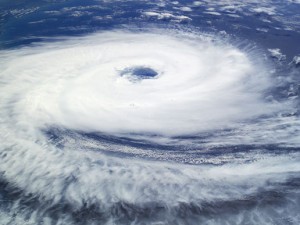 As with many types of extreme weather, the size and intensity don’t necessarily reflect its notoriety: the typhoon, for example, is typically several times bigger than its Atlantic cousin, the hurricane. But many smaller hurricanes have achieved a higher profile simply because they made landfall and devastated the highly populated southern states of the US.
As with many types of extreme weather, the size and intensity don’t necessarily reflect its notoriety: the typhoon, for example, is typically several times bigger than its Atlantic cousin, the hurricane. But many smaller hurricanes have achieved a higher profile simply because they made landfall and devastated the highly populated southern states of the US.
Hurricane Katrina
Where: New Orleans, USA When: August 2005 Fatalities: 1,833 Damage: USD 108bn (GBP670m)
One of the deadliest hurricanes in recent memory and the most destructive in US history, Hurricane Katrina profoundly affected New Orleans and its surroundings, where water reached up to 20 kilometres (12 miles) from the shore.
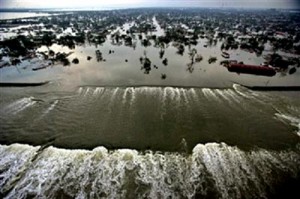 Hurricane Katrina was the child of a waning tropical depression and an atmospheric trough known as a tropical wave. It moved across the Gulf of Mexico and rapidly strengthened over unseasonably warm waters, transforming into a maximum-rated category 5 hurricane and shifting away from Florida shortly before it slammed into the vulnerable city of New Orleans in south-east Louisiana.
Hurricane Katrina was the child of a waning tropical depression and an atmospheric trough known as a tropical wave. It moved across the Gulf of Mexico and rapidly strengthened over unseasonably warm waters, transforming into a maximum-rated category 5 hurricane and shifting away from Florida shortly before it slammed into the vulnerable city of New Orleans in south-east Louisiana.
The Great Hurricane of 1780
Where: Caribbean When: October 1780 Fatalities: 22,000 Damage: Unknown
Simply known in English as the Great Hurricane of 1780, this category 5 beast is the deadliest hurricane on record. It predates when records officially began in 1851, so there’s no exact data. It’s likely though that its wind speed exceeded 320 kilometres (200 miles) per hour and it devastated the relatively unprepared parts of the Antilles in the Caribbean Sea. Casualties include fleets of British and French ships that were vying for control of the region as a part of the American Revolution. It’s likely it formed in the eastern part of the Atlantic Ocean picking up strength as it approached Barbados.
Bhola Cyclone
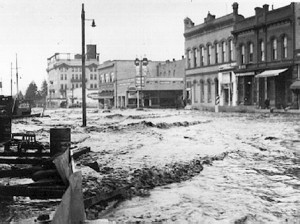 Where: Bangladesh When: November 1970 Fatalities: 500,000 Damage: USD 490m (GBP306m)
Where: Bangladesh When: November 1970 Fatalities: 500,000 Damage: USD 490m (GBP306m)
The Bhola Cyclone was, meteorologically speaking, far from record-breaking. Its winds of around 140 kilometres (87 miles) per hour made it the equivalent of a relatively modest category 3 or 4 hurricane. But it struck a very vulnerable low-lying area of eastern Pakistan with a six-metre (20-foot) storm surge at night. With no way of warning locals, the authorities were helpless as hundreds of thousands drowned. Bhola formed from the remnants of a tropical storm and another depression in the Bay of Bengal, intensifying over four days and sweeping north into what is now Bangladesh.
Hurricane Vince
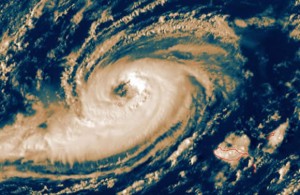 Where: Portugal/Spain When: October 2005 Fatalities: 0 Damage: N/A
Where: Portugal/Spain When: October 2005 Fatalities: 0 Damage: N/A
Its winds peaked at 120 kilometres (75 miles) per hour, which only just registers as an official hurricane, it caused no damage and there were no fatalities, so why could Hurricane Vince be considered ‘extreme’?
Because of its unheard-of Spanish location and because of conditions at the time, which should never have produced a hurricane. The reasons for its formation near Madeira still aren’t understood. The 22-degree-Celsius (72-degree-Fahrenheit) seas should never have allowed the 25-kilometre (15-mile) eye to form within the tropical storm. But form it did, and it lasted several hours, breaking up just before it hit the Spanish mainland.
Super Typhoon Tip
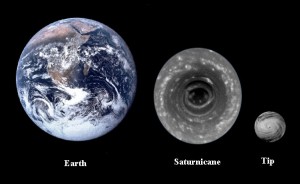 Where: Eastern Pacific When: October 1979 Fatalities: 86 Damage: Unknown
Where: Eastern Pacific When: October 1979 Fatalities: 86 Damage: Unknown
Super Typhoon Tip was a monster, even for a typhoon. It broke several records: it had a diameter of 2,220 kilometres (1,380 miles) – nearly twice that of the previous record holder. It had sustained winds of 260 kilometres (160 miles) per hour and also set the world record for intensity with a staggering pressure low of 870 millibars.
Typhoon Tip originated south of Micronesia though it remained a tropical storm until it made a sudden westerly diversion from Guam, where it intensified considerably and hit its peak nearly 1,000 kilometres (620 miles) from land.
Cyclone Tracy
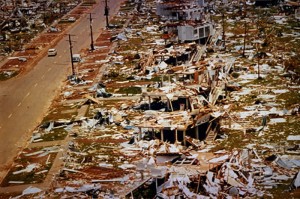 Where: Darwin, Australia When: 25 December 1974 Fatalities: 71 Damage: USD 586m (GBP366m)
Where: Darwin, Australia When: 25 December 1974 Fatalities: 71 Damage: USD 586m (GBP366m)
On Christmas Day 1974, a category 4 cyclone swept through Darwin, Australia, with winds gusting in excess of 217 kilometres (135 miles) per hour towing a four-metre (13-foot) storm surge. Locals had been warned, but partly due to the season and partly because Cyclone Selma had failed to make landfall earlier that month, many made no preparations at all. Cyclone Tracy developed in the seas 500 kilometres (300 miles) north of Australia and spent the next few days tracking south-east until it hit the warm water of the Timor Sea, where it intensified dramatically.
Interesting facts about hurricanes, cyclones and typhoons
No.1 – Cyclone Tracy was, until 2008, the world’s smallest cyclone with a width of just 48km (30mi).
No.2 – Experts agree that Typhoon Tip would have been the most disastrous ever if it had hit the mainland at peak intensity.
No.3 – Hurricane Vince proved to be a blessing in disguise, dropping several inches of rain on a drought-ridden Spain.
No.4 – Cyclones, hurricanes and typhoons form in the warm waters near the equator from where they circulate away. Their general course is predictable, though it’s hard to know what they will do or how strong they will get over longer periods.
